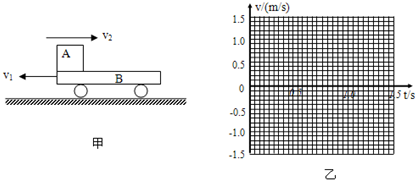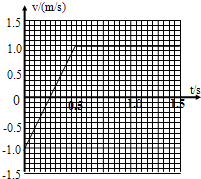问题
问答题
如图甲所示,质量mB=1kg的平板小车B在光滑水平面上以v1=1m/s的速度向左匀速运动.当t=0时,质量mA=2kg的小铁块A以v2=2m/s的速度水平向右滑上小车,A与小车间的动摩擦因数为μ=0.2.若A最终没有滑出小车,取水平向右为正方向,g=10m/s2,求:

(1)A在小车上相对小车停止运动时,小车的速度大小
(2)通过计算,在图乙所示的坐标纸中画出1.5s内小车B运动的速度一时间图象.
答案

(1)A在小车上停止运动时,A、B以共同速度运动,
设其速度为v,取水平向右为正方向,由动量守恒定律得:
mAv2-mBv1=(mA+mB)v,解得,v=lm/s;
(2)设小车做匀变速运动的加速度为a,时间t,
由牛顿运动定律得:μmAg=
a,m B
由速度公式得:v=-v1+at,
解得:t=
=0.5s,v+v1 a
则小车B先做匀减速运动,后做反向的匀加速运动,
最后做匀速直线运动,小车的速度时间图象如图所示.
答:(1)小车速度大小为1m/s;
(2)图象如图所示.
